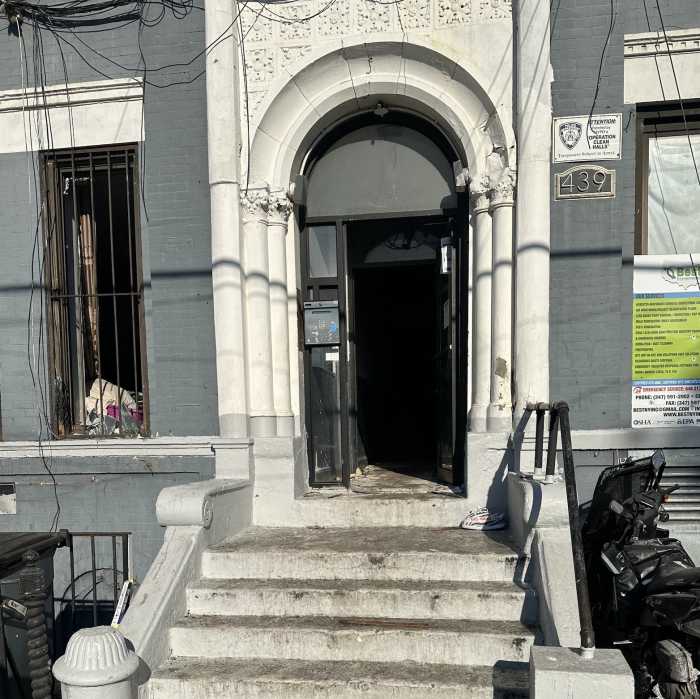How can two friends start out in the same place and wind up following widely divergent paths in life? Dan Sallitt’s “Fourteen” follows Jo (Norma Kuhling) and Mara (Tallie Medel) from their early jobs after college to Mara becoming the mother of an infant while Jo’s life dissolves into chaos. Sallitt has dedicated films to both Éric Rohmer and Maurice Pialat, and if it’s possible “Fourteen” synthesizes their models. From Rohmer, he has taken an intimate portrait of female friendship, but the influence of Pialat dominates. (Critic Filipe Furtado aptly noted the distance of Sallitt’s films from American cinema.)
Rather than run through a series of plot points on an outline, “Fourteen” leaves us with the basics of its characters’ lives but keeps many of the details opaque. It treats the audience like a witness to a relationship that we should understand because we’ve grown up alongside Jo and Mara, punctuated with ellipses. It plays like a song with a steady beat and bass line spinning out increasingly varied and complex variations on a core melody.
Two young women discover their lives moving them away from each other
“Fourteen” begins with Mara working as a teacher’s aide and Jo doing social work. Mara tries to help Jo succeed at her job; for instance, she scolds her for sleeping in late and offers advice about the bureaucratic paperwork she has to fill out. The two socialize regularly in New York, often with their boyfriends. Mara finds her way into a version of middle-class adulthood, settling down with Adam (C. Mason Wells), and getting a more steady teaching position. On the other hand, Jo keeps losing her jobs and struggles with substance abuse and mental health problems. As much as Mara tries to help Jo, the two women eventually drift apart.
Sallitt doesn’t move the camera or use close-ups. Several important scenes are extreme long shots. In one, Mara arrives at a suburban train station to meet Jo, temporarily staying at home after a hospitalization. The camera holds a long take of that station until we can recognize the tiny image of Mara disembarking, and then it starts panning to follow her walking down the street. The film’s end title and closing credits roll over a shot of cars passing in the street, held for 90 seconds with live sound on top.
“Fourteen” does its best to convey a sense that we’re living alongside Jo and Mara. To quote John Lennon, it tells a story about how life happens while we’re busy making other plans. The film’s most moving scene, in which Jo shows up at Mara’s apartment at 12:30 a.m. and proceeds to explain that she thinks her life started going wrong when they were 14, is one of the few that also feels designed to explain backstory.

Many critics have remarked upon the reticence of Sallitt’s directorial style, but his framing is elegant and careful. The film is even discreet in a rather old-fashioned way. “Fourteen” cuts just before Mara and her boyfriend have sex, with her revealing to him (but not the audience) that she’s not wearing panties. It makes constant references to Jo’s drug use, but she never engages in arcane practices like smoking cacti to get high (or more common and prosaic ones like popping Oxycontin) onscreen. So much goes unsaid that the handful of scenes working with melodramatic material become all the more powerful.
If life’s psychological tempo speeds up as we age, the same thing is true for “Fourteen.” Its first half hour could all take place in the same year, but its final third seems to cover years. Jo and Mara drift apart gradually, and at one point Mara mentions that she hasn’t seen Jo in a year. The film, especially through its editing, expertly invents a rhythm to depict the link between the two women’s lives.
Until “The Unspeakable Act,” made in 2012, the world took little notice of Sallitt’s micro-budget films. But “Fourteen” has played festivals and found theatrical distribution around Europe and Latin America, and even became his first film slated to play US theaters. Due to the COVID lockdown, that’s not happening, unfortunately, but in an odd way our current circumstances may enhance the intimacy “Fourteen” aims for. Jo and Mara are able to walk through the world, but their experience of time and space comes to feel like a trap by the film’s end. As in “The Unspeakable Act,” in which Medel played a teenager with incestuous desires, Sallitt’s gaze is open and nonjudgmental. Still, “Fourteen” shows the uncertainty, if not outright guilt, that come with caregiving’s responsibilities and the way that people’s emotional demands can drive one another nuts.
FOURTEEN | Directed by Dan Sallitt | Grasshopper Film | Begins streaming via BAM May 15 | bam.org
To sign up for the Gay City News email newsletter, visit gaycitynews.com/newsletter.




































